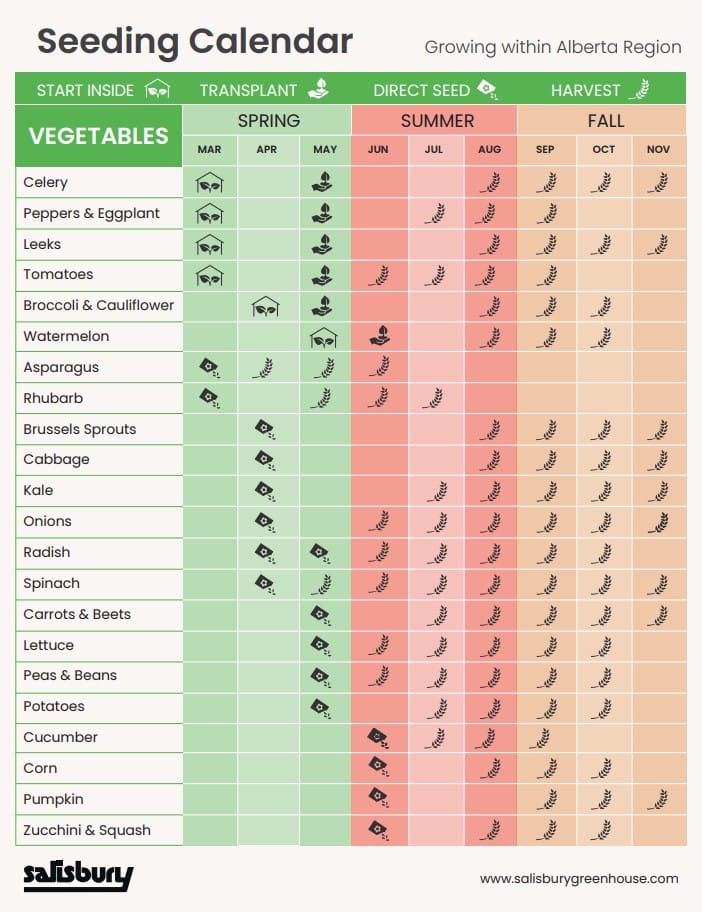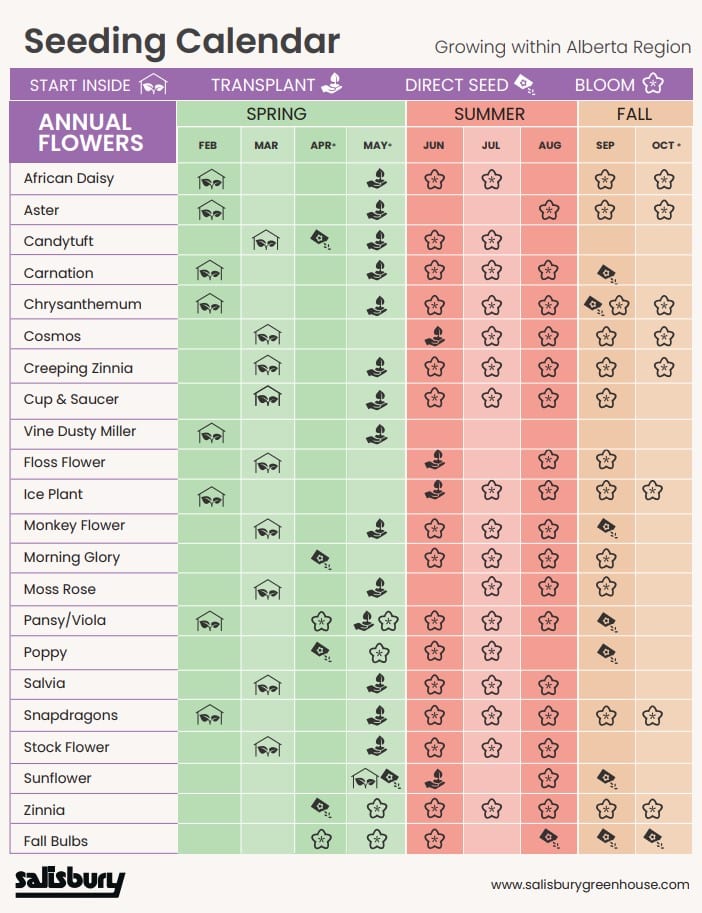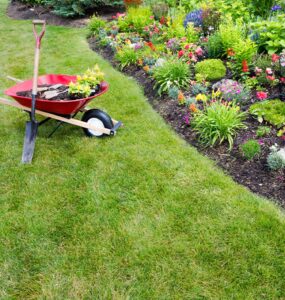Who doesn’t want to grow their own vegetables and enjoy summer salads filled, literally, with the fruits of their labour. Unfortunately, for many its cornucopia of health and wellness benefits are outweighed by a sense of overwhelming complexity. I wrote this column to bring a little piece of mind.
What follows is a cheat-sheet of when and how to plant the most common edibles’ seeds. Pin it to your fridge or put the dates in your phone; here is your guide to what to plant when for a delicious summer harvest.
* Please note this calendar is a guide for Zone 3 climates (Alberta, Canada)
February
Onions and Leeks – mid February
Germinating onion seeds takes a little patience as they usually take about 3 weeks to emerge. As with all seeds, make sure to keep the medium moist.
You’ll want to start in start February in order to give them plenty of time to grow. Plant the seeds in clusters of 6-8 and try to germinate them around 15 Celsius.
March
Peppers – beginning March
The best time to sow pepper seeds indoors is the beginning of March. Try to keep them as warm as you can during germination by keeping the seed tray by a sunny window or on an old, inefficient appliance that loses heat.
Want more out of the box tips? Click here!
Tomatoes – early March
Seed your tomatoes about 8 weeks before the last frost (around early March). Don’t try to get a jump on spring by starting them early. Doing so usually does more harm than good as they tend to get leggy and pale if inside too long.
Sow the seeds about 3 mm deep in a moist seedling mix. You won’t need excess light during germination but as soon as they emerge pour as much light on them as possible.
April
Broccoli and Cauliflower – early April
It’s a good idea to start broccoli from seed in early April to make sure it’s ready for harvest before the first hard frosts of fall. Provide lots of light and keep it inside until the last frosts have passed.
Cucumber – mid April
Cucumbers are easy to grow indoors and started them 4-6 weeks before May 7 will give a convenient jump start to the season. Plant the seeds about a half inch deep in 3” pots. I recommend only planting 1-2 seeds per pot as they grow quickly.
The seeds prefer a temperature of 20-25 degrees C, but will germinate, albeit grudgingly, with slightly less.
Get Alberta’s Best Growing Tips
Zucchini & Summer Squash – late April
Starting squash from seed is easy. Make sure you have a warm spot (above 20 degrees C if possible) and plant 1 or 2 seeds in each 3” pot.
Keep the soil moist and they will germinate in about a week. Give them as much light as possible and they’ll grow quickly. They grow so quickly, in fact, that I wouldn’t recommend starting them indoors before the second week of April.
May
Lettuce and Salad Greens – early May
Lettuce germinates easily enough that you can direct seed them into your containers once the frosts are over. Make sure the soil is nutrient rich and moist and cover the seeds with a light layer of seeding mix.
Salad greens love cool temperatures and will germinate best below about 15 Celsius. Starting them on a window-sill indoors will give you a jump on spring; transplant them gently outside when the leaves are 3 inches high.
Carrots and Beets – mid May
The best way to grow roots veggies is to direct seed them. You usually do this in mid-May (weather-dependent, of course) once the soil has thawed. Test to see if the soil is warm enough by digging your finger into the first inch; if it’s chilly to the touch wait a few days or the seed will have trouble germinating.
BONUS Calendar!
Start your flowers indoors, too!

















